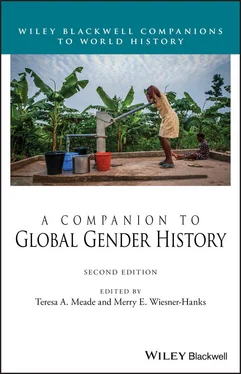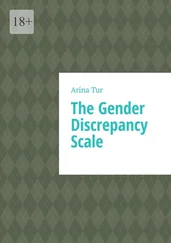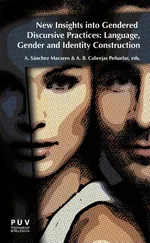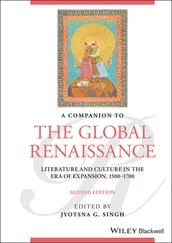1 ...7 8 9 11 12 13 ...54 Nonetheless, though we are increasingly critical of the old schemata, the historic persistence in most cultures of binary sex and gender categories, which have also been replicated in religion, culture, language, and science, requires some explanation. It seems clear enough that the mammalian model of reproduction has served as the template for male/female dimorphism in human societies. It seems equally certain that human groups have made powerful investments in fertility in order to ensure survival in a world of conflict and competition for resources. A rich archaeological record of fertility rites and goddesses and the regular equation of planting and harvest activities with human reproduction is testimony to the urgency of these beliefs. However, there is evidence that suggests that even very ancient societies acted to limit fertility when population outstripped prospects. Since in either case the management of procreation was the key to assuring the prosperity of individuals, kinship groups, and entire societies, a high premium was placed on the procreative capacities of males and females and on the sexual practices that ensured or regulated births.
No doubt, genitalia and sexual function have always figured prominently in assessments of these capacities, but though erection and ejaculation in males and menses and pregnancy in women have been necessary features of cultural assessments of reproductive ability, they are only a part of the huge variety of ways that human societies characterize males and females as men and women and as more or less masculine or feminine versions of their gender. It might appear in this schema that sexual capacity is biologically primordial and gender is a secondary, cultural effect, but in fact the opposite is more nearly the case. Despite the many forms it has assumed in human societies, gender appears to be the stable and persistent category while sexuality has been more changeable and adaptive. The gender arrangements of most societies have dictated what is valued and permitted in the domain of sexual identity and sexual behavior and have done so for the most part within binary male/female orders that have reproduced themselves as systems of male dominance. Though they can be studied on their own terms, sexual ideologies, sexual practices, and representations of the sexualized body are deeply influenced by the gendered norms that have prevailed in political, cultural, and economic life of all historical societies. In a sense, gender makes a social virtue out of the necessity of biological sex, policing the boundaries of the sexually permissible, nourishing ideals of sexual love, and dictating norms of sexual aim and object.
The power of the procreative model of sex has been so great that we are encouraged to think of sexuality as an innate force or drive favoring heterosexual sexual relations. Religious prescription and scientific opinion alike have generally endorsed this view. However, the notorious unruliness and apparent unpredictability of sexual desire has continuously destabilized the heterosexual model, producing contrary effects: it has provoked societies to favor theories and moral regimens that channel or repress sexuality in behalf of accepted norms, but it has also made sexual freedom or emancipation a cause and justification for individual or social rebellion. However, while there is no dismissing the entrenched belief that sexual desire is a natural drive with innate aims and objects, historians of sexuality have found it far more fruitful to think of sexual desire, following the ideas of the French philosopher, Michel Foucault, as a kind of cultural discourse implicated in the “games of power” played by competing discourses of law, religion, folk beliefs, and science. In this view sexuality is a set of negative sanctions and positive incentives enshrined in language, images, and other cultural representations that do not repress or channel desire so much as express it in the form of cultural ideals of love, family, and heterosexual propriety, and as revulsion or distaste for aberrations from these norms. Foucault’s aim here is to historicize and denaturalize sex, to make us think of it not as an irresistible drive that owes its truth to an inherent quality it possesses naturally, but as a product of cultural tactics that makes it continuous with power and politics.
Foucault’s strategy of thinking about sex as cultural discourse rather than universal instinct allows us to appreciate better the permutations, both subtle and dramatic, that mark the difference in sexual expression between cultures and within cultures over time. It allows historians to analyze sexuality as a form of power that operates on and through individuals, exhorting them to culturally admissible ends, but also occasionally arousing in them resistance to or rejection of mainstream norms. This way of thinking about sexuality does not dismiss the biological and material origins of sexual desire, but it does demand that we consider how individuals experience physiological events – their own and others’ – through the lens of culture. One woman’s pleasure might be another’s pain; an experience of sexual ecstasy at one moment might be a humiliating debacle at some other time. Finally, discourse analysis reveals the connections between the deeply personal experience of sex and the public domains of state and society. It shows us how sexuality reflects changes in government, citizenship, social life, science, and technology, and influences these things in turn.
Much of the evidence we have about the early history of sexuality is deduced from what we know about demography and patterns of marital fertility extending back into human prehistory. Marriage and kinship alliances are ubiquitous institutions in human societies, providing the immediate context for procreation, child rearing, and the transmission of wealth. Historical demographers are convinced that ancient peoples had sufficient understanding of birth control to shape family fertility in significant ways, limiting or spacing births when necessary, expanding family size when prospects improved. The quantity and nature of sexual relations were certainly influenced by the vicissitudes of marital fertility, and we can presume that women’s sexual experience and health, in particular, were directly affected by the need to resort to abstinence, prolonged breastfeeding, abortifacients, or abortion to limit births, or by life‐threatening multiple pregnancies in times of abundance. In historic times, in the ancient West and Far East alike, knowledge of contraception was widespread and presumably widely employed. Knowledge of body function circulated in official medical practice and oral culture based on theories of humoral dynamics in the West, and in the East on notions of the balance of yin and yang . In both East and West, medical knowledge was a precious resource for understanding methods of avoiding pregnancy or birth, ensuring fertility or the birth of a boy, and enhancing or anesthetizing sexual feeling. In ancient China and classical Greece and Rome, sexuality was aligned with profoundly patriarchal gender systems that favored viable male heirs and, with some exceptions, regarded women merely as reproductive vessels. The most prosperous Chinese, Greek, and Roman men fulfilled their conjugal duties but took their sexual pleasures elsewhere, with prostitutes or boys in Greece and Rome, or concubines in China. Marriage was foremost an arrangement between men for producing (male) heirs and transmitting property to the next generation of patriarchs.
In ancient Greece and republican and imperial Rome, remarkably similar sex and gender systems set the foundations for all later developments in the West. The Greek and Roman male citizen exercised complete legal and material dominion over everyone else in society: women, slaves, and minors. Women were regarded as inferior beings and enjoyed little autonomy and few rights. Rigid codes of sexual conduct based on concepts of penetration and “active” or “passive” sexual practices paralleled this hierarchical gender system. An adult male was permitted to penetrate but he risked losing his personal honor if he either allowed himself to be penetrated orally or anally, or willingly assumed the passive, inferior position in intercourse. In ancient Greece an adult male could exercise his right as penetrator on slaves and with boys who did not yet possess their manly honor, especially if the man was a distinguished citizen and the boy from a good family. Scholars have argued that ancient pederasty shared nothing with our modern concept of homosexuality, in which reciprocal penetration occurs between peers, a notion that would have been unthinkable to a Roman vir or a citizen of a Greek city‐state.
Читать дальше












